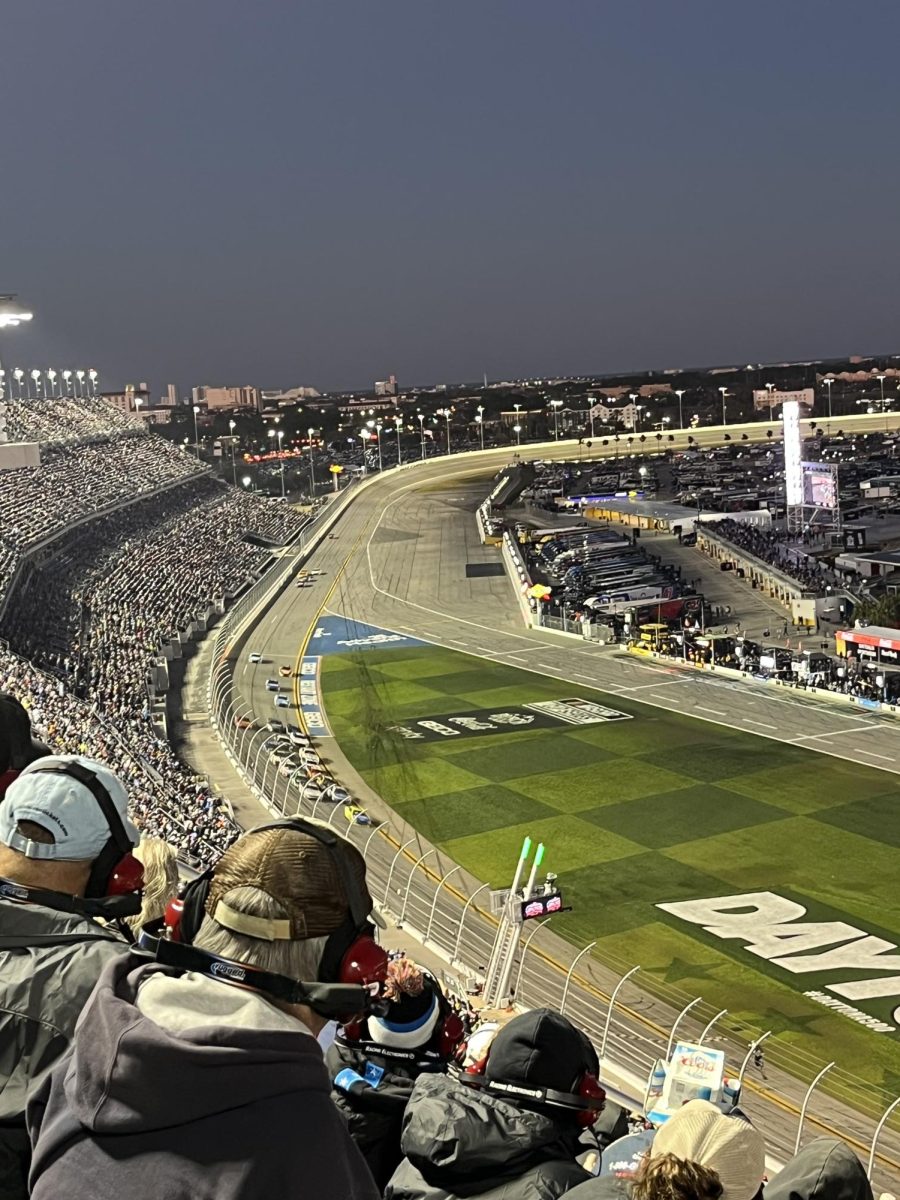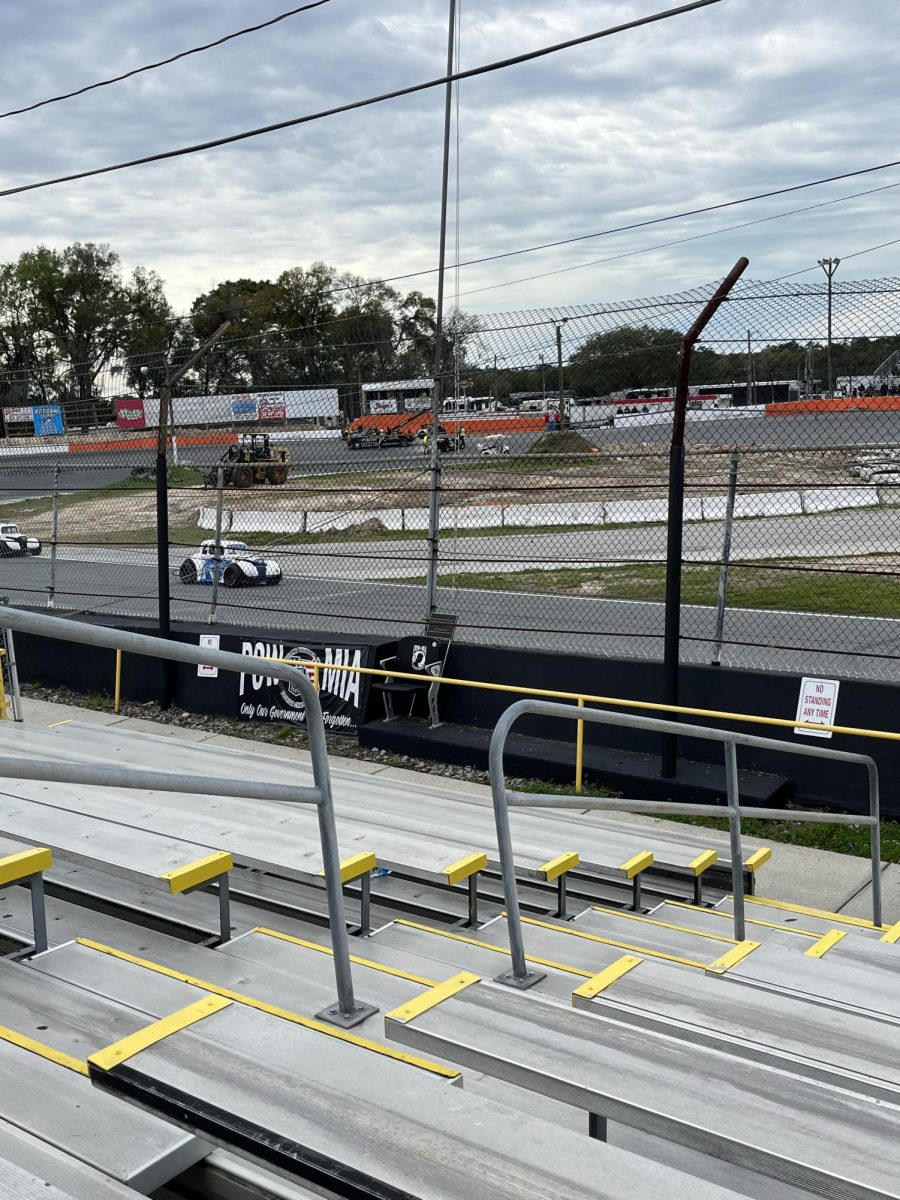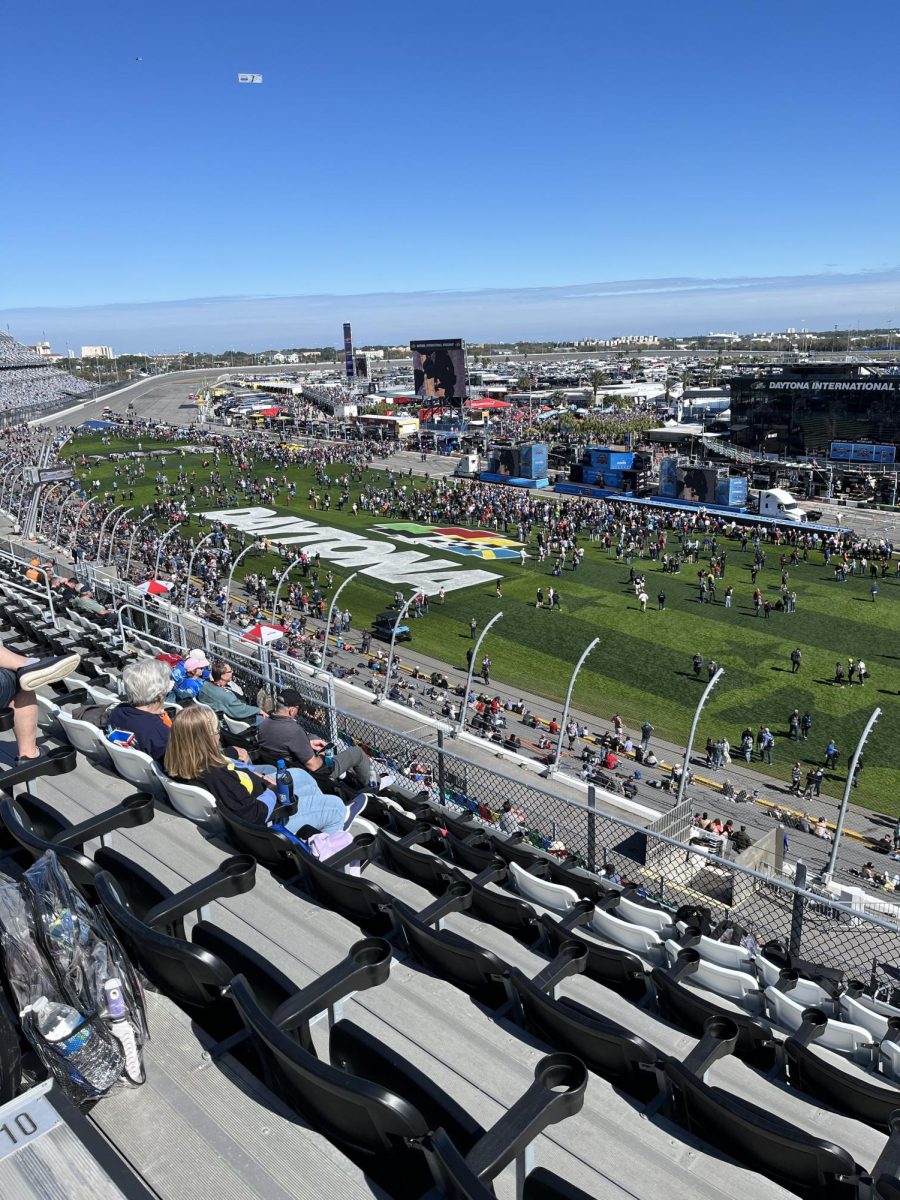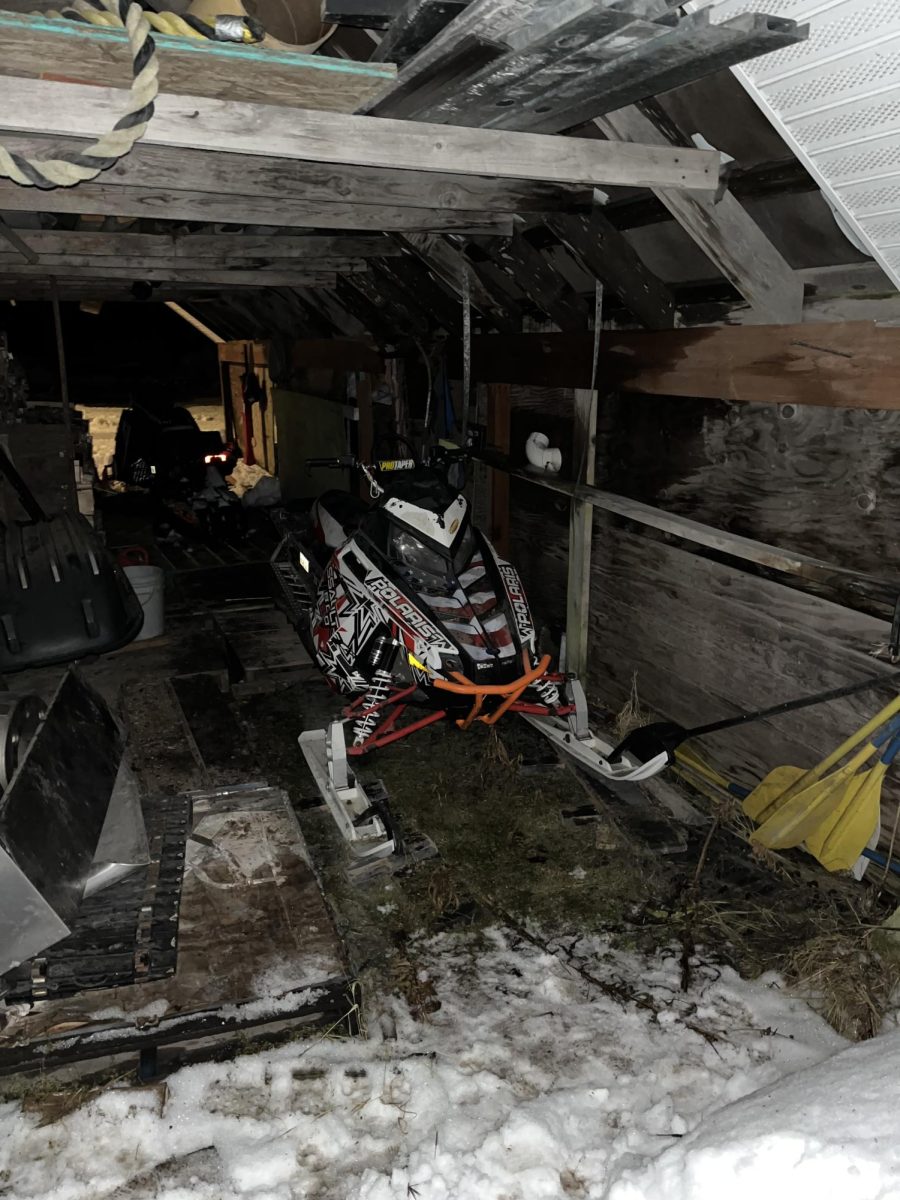The Daytona 500 is one of the greatest races in America. It serves as a season opener for the NASCAR Cup series, which sets the tone for the very pack and exciting race season. I will be talking about what the Daytona 500 is and how it works.
First, the race consists of 500 miles. This is 200 laps around the two-and-a-half-mile race track. The race track is very unique. The turns are banked at a whopping 31 degrees. The start/finish line is banked at 18 degrees, as well. The turns need to be at this angle for the cars’ downforce. Without downforce, they will all crash and could not complete a full lap. The front straight is 3,800 feet long. The back straight, known as the super stretch, is 3,000 feet long.
The race cars on the track are equipped with powerful EFI V8 engines that produce around 750 hp. At full speed, the cars go 180 miles per hour. That is way more compared to an average car with around 180-200 horsepower. The vehicles are built in a certain way. When they are at high speeds, the airflow over the car makes a downforce to keep them planted on the track. Ear protection is recommended when you are on track because of how loud the cars are. When they pass by, the cars shake the grandstands.
In the race, there are different colored flags. Green, yellow, red, and checkered. The green flag means go; they are good to race and fight to victory. The yellow flag indicates caution. This is usually shown when a crash happens or debris in the track. When the caution flag goes off, they must limit their speed and follow the pace truck. Yellow flag laps are also counted for the final 200 laps. So, if they do five caution laps, that adds up to the total number of the 500 miles. When they are ready to race again, they do no color and do one more lap before displaying the green flag. A red flag is presented when a terrible crash happens, cars can’t pass through, or it isn’t safe enough. After the red flag is gone, the yellow banner comes up for caution laps. The checkered flag is the banner that is presented when the racers have finished the race.
In a pit row, cars can refuel, change tires, and fix bits and pieces when needed. Sometimes, during caution laps, the pit row is closed. There is a light, and when it is green, the pit row is open for racers to fix their cars. There is a speed limit of 50 mph in the pit row. If you exceed the speed limit, you get a penalty lap through the pit row again.
The Daytona 500 is a fascinating race, and there are a lot of cool facts about the track and how everything works. There are tons of components that make the race happen. In the next article I am going to be talking about my personal experience of the Daytona 500. What I thought of the race, crazy crashes, and more.












